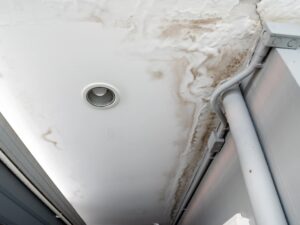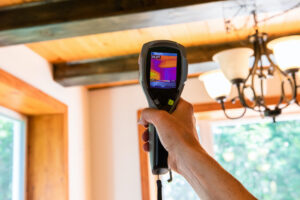 We talk about mold growth a lot in our neck of the woods, but we mainly focus on mold growth in homes. It’s not often we discuss mold growth in public facilities, but it’s an important topic as well.
We talk about mold growth a lot in our neck of the woods, but we mainly focus on mold growth in homes. It’s not often we discuss mold growth in public facilities, but it’s an important topic as well.
Public facilities suffer from the same issues residential homes do but in a larger capacity. This means the potential for mold growth is often more substantial as well. Let’s go over some of the basics of signs of mold growth and the mold remediation process as it relates to a public facility.
Mold Growth in a Public Facility
Nothing changes as it relates to what mold requires to grow, but because there are so many more areas to grow, you’ve got to look at it how to tackle it differently. Poor ventilation is standard in older public facilities, which leads to mold growth in areas not always visible to the naked eye.
Think elevator shafts and air ducts. Both of these areas are prone to leaks and condensation which is precisely what mold colonies are looking for to set up shop.
Unfortunately, these are also areas that aren’t easy to clean.
The amount of space available in a public facility also poses a problem. The mold can spread faster and further before a facility manager is aware there’s a problem.
This is why assigning someone, whether it be a facility manager or another employee, to do regular spot checks for mold is vital for mold prevention.
Signs of Mold Growth
The signs of mold growth in a public building are no different than what you would look for in a private home.
You still need to use your nose to detect any musty smells in the area. Mold has a very distinct smell, and as mold grows, the more potent the smell becomes.
Also, pay attention to the moisture content in the facility. Higher moisture content is a giveaway that mold is growing somewhere close. Mold only requires a water source and food to flourish, and since it’s not a picky eater and can feed on a variety of different items if the moisture is available, it is most likely going to grow.
If you don’t know the status of the ventilation system in your building, keep an eye out for areas where you find condensation buildup on your windows or mirrors. This can indicate that the air flow in the building isn’t moving correctly and can be a direct factor in the spread of mold.
Public Facilities and Mold Remediation
In some situations regarding residential buildings, it’s ok for the occupants to handle the mold removal process on their own, but that’s not the case for public facilities.
With the so many people entering and leaving a public facility it’s always recommended for a professional mold remediation service to handle the mold removal. Mold can have severe effects on those with mold allergies, and if the right personal protection equipment isn’t used during the removal process, those working with the mold are at risk.
Plus, mold is easily spread, and if you have people in and out of your facility all day long, they can quickly spread the mold further throughout the building and perpetuate the mold growth problem.
Professional mold remediation services are knowledgeable about mold growth and have special equipment designed specifically for the process. It’s better to reduce the risk of sickness by letting them handle the mold removal.
Contact Us!
Speaking of mold remediation services… that’s what we do! We’d be more than happy to answer any questions you might have regarding the presence of mold, the remediation process or even help you with tips on how to prevent mold from returning. Contact us today and let one of our certified mold removal specialists help you get started on your mold problem!







